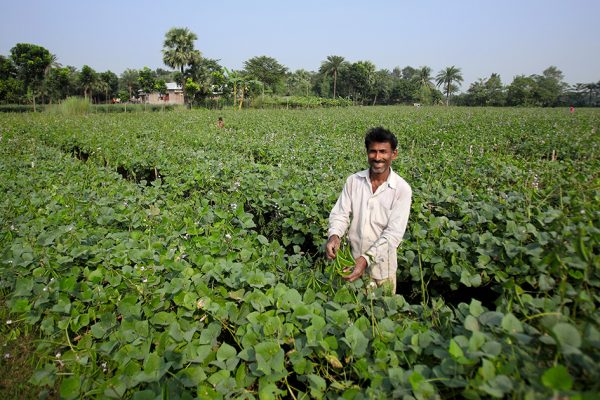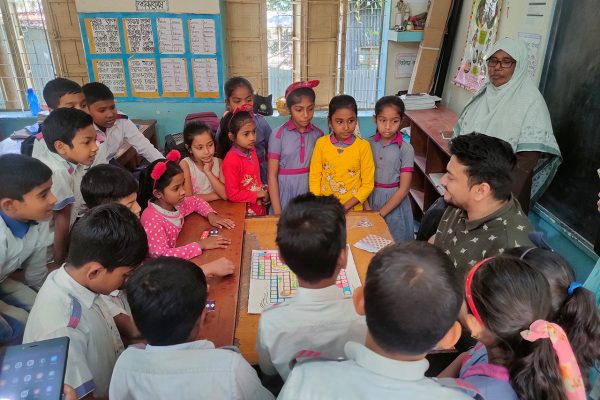Kiva Passport Series: South Sudan: Part 2: Microfinance
Reading Time: 3 minutes
The following article was originally posted by Alyssa McGarry on the Kiva blog. Each month, the Kiva Blog profiles a country we work in through a three-part profile called the Passport Series. This month, we are taking a look into South Sudan! This is the second part of this month’s series, which focuses on microfinance in South Sudan. The first part was a country profile and later this month, we will focus on microfinance as a development effort to help post-conflict countries like South Sudan.
The following article was originally posted by Alyssa McGarry on the Kiva blog. Each month, the Kiva Blog profiles a country we work in through a three-part profile called the Passport Series. This month, we are taking a look into South Sudan! This is the second part of this month’s series, which focuses on microfinance in South Sudan. The first part was a country profile and later this month, we will focus on microfinance as a development effort to help post-conflict countries like South Sudan.
Microfinance in South Sudan:
Microfinance opportunities and needs are plentiful in South Sudan. Both the North-South civil war, and the conflict in the western region of Darfur have had a large influence on the need for the microfinance industry. A peace agreement ended the North-South war in 2005, and the South plans to succeed from the North this July. Much of the country is still highly affected by the years of turmoil, and now South Sudan faces huge development challenges. Houses, businesses, families, and lives need to be restored. Microloans can aid in this rebuild. While there is a high demand for financial services, South Sudan’s financial sector is still weak.
As of 2009, a small percent of the population (over 8 million) in South Sudan were formally employed, only about 6000 had bank accounts, and 21,297 were microfinance borrowers. While there are several small MFIs, there are 3 main ones whom are licensed by the Bank of Southern Sudan. One of these main players is Kiva’s Field Partner: BRAC Southern Sudan. BRAC, formerly known as Bangladesh Rural Advancement Committee, has the most coverage and is present in 5 out of the 10 states of Southern Sudan.
Like other MFIs operating in South Sudan, BRAC SS faces the following challenges: limited institutional capacity, lack of resources, inadequate physical infrastructure, and a nascent policy ( Microfinance Focus ). While aid money is flowing into South Sudan, BRAC SS works locally aiming to help women set up small businesses so that they are not dependent on foreign aid. In 2010, USAID partnered with the government of South Sudan to sponsor the first Southern Sudan Microfinance Conference with hopes to advance microfinance in the region.
Kiva and South Sudan’s Microfinance Relationship:
Kiva is proud to work with BRAC SS . Since the organization’s launch in 2006, BRAC has become the largest NGO and provider of microfinance in South Sudan. According to MIX Market , BRAC has a gross loan portfolio of $2.2 million and 14,889 borrowers. They have seen impressive expansion in the past few years; from 2007 to 2010, the number of active borrowers grew from 3,455 to 18,498.
BRAC SS implements microfinance programs for the economic empowerment of war-affected marginalized populations, especially women. Kiva lenders have helped to fund 3,455 borrowers and have disbursed $810,100 in loans to BRAC SS borrowers, 99.45% of which are women.
BRAC’s Efforts in South Sudan:
The man who primarily helped BRAC borrowers successfully raise loans through Kiva.org was John Ohsio. John, a former BRAC employee, was the staff person responsible for posting and managing BRAC South Sudan borrower profiles on Kiva.org. Read more about John’s personal journey, watch his video, and learn how he helped the people of Southern Sudan get back on their feet and rebuild their lives.
BRAC Southern Sudan is especially unique in their initiatives to provide non-financial services to their borrowers. The BRAC Essential Health Care (EHC) and the Income Generation for Vulnerable Group Development (IGVGD) programs are examples of non-financial services. The EHC focuses on reproductive health care, disease prevention, family planning, and much more; the IGVGD Program targets households headed by widows who are taking care of children or orphans. Although the number of widows is not yet calculated for South Sudan, there has been an increase post civil war. These women lack skills in income earning activities, confidence, capital and opportunities to get access to financial institutions for borrowing. Microfinance is a sustainable platform for non-financial services and BRAC is executing that in South Sudan.
Kiva Borrower Stories:
Susan Jusphine, a Kiva borrower through BRAC, is 37 years old and is widowed. She sells clothes and bed sheets and received a loan to purchase a sewing machine. She has 4 children. With the extra profits from her loan, she hopes to pay their school fees and send them to school.
Tijore Jackline is currently in the business of selling fruits such as mangoes, guava, and oranges and vegetables like cabbages, okra, etc. A loan of $350 helped her purchase a refrigerator for keeping her fruits longer. Tijore is 33 years old and is widowed because her husband died fighting for South Sudan’s liberation. She has 2 children who attend school. With the extra profits from her loan, she hopes to be able to buy a machine for crushing fruits into juice.
Click here to learn more about BRAC’s work in Southern Sudan.







